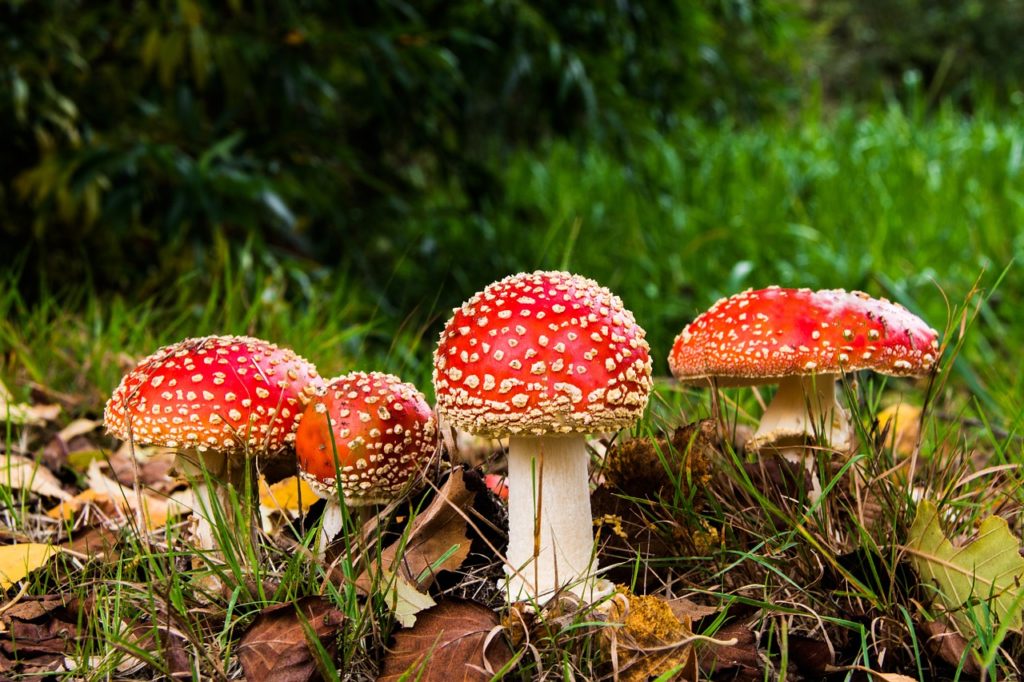The claim that psychedelic mushrooms played an integral part in early Christianity is an extraordinary one, but Julie and Jerry Brown who put forth this theory in their new book The Psychedelic Gospels have a wealth of evidence to support it, some of which you will get to see below. As it turns out, there is a surprising prevalence of mushrooms in early Christian art, and these are not just generic mushrooms- these early artworks contain multiple examples of both Psilocybin cubensis and Amanita muscaria mushrooms, both of which are highly psychedelic.
In our second interview with Jerry Brown, Ph.D., we look at just how solid the visual evidence of psychedelic mushrooms is in early Christian art, and what this implies about the origins and early days of one of the world’s largest organized religions.
Thank you for speaking with us again, Jerry. The presence of psychedelic mushrooms in Christianity is such a fascinating topic. I’m curious, are we talking about psilocybin mushrooms or Amanita muscaria mushrooms?
The psychedelics we’ve found in early Christian art were pretty much balanced between Amanita muscaria and psilocybe mushrooms. The amanita was very distinct. We’ve had Paul Stamets, one of the world’s most eminent mycologists, verify our interpretation analysis of the mushroom on the green man head in Rosslyn Chapel as a taxonomically correct Amanita muscaria. And in some of the psilocybin mushrooms we found, whether it be in St. Michael’s church in Hildesheim or in the church of St. Martin de Vicq in central France, the mushrooms are represented so clearly that ethnobotanists have been able to tell what variety of psilocybin they are.

Green Man of Rosslyn Chapel with Amanita muscaria mushroom sculpted into forehead. Photo by Julie M. Brown
Wow, that’s incredible! So you think that both psilocybin and amanita experiences were part of those early traditions?
Yes. In the book we feel we have presented compelling evidence that there is both Amanita muscaria and psilocybin in the church history, and it’s not as atypical as one might think. In Egyptian art you find psilocybin and psychedelic datura plants, and they also see amanita growing in Mount Horeb at certain times of the year. It’s also present amongst the trees of Lebanon, and there’s a really fascinating quote that we have in the book where Jesus says “If you become my disciples and listen to my words, these stories will minister to you, for there are five trees waiting for you in paradise that are undisturbed in summer in winter, and those leaves will not fall. Whoever will become acquainted with them will not experience death.” So what remains undisturbed? Evergreen trees, whose leaves do not fall, and these trees are the host of Amanita muscaria, whose spores grow in the humus of decaying pine needles. There are other passages in the bible where it’s very clear that they bring cedars from Lebanon.
One wouldn’t think about tree cultivation as a pathway to overcoming death, but that makes perfect sense if they are the host for psilocybin mushrooms, especially in light of all the research showing how psilocybin experiences treat end of life anxiety by easing people’s fear of death.
Absolutely. A turning point for us was when, after seeing evidence of both of these mushrooms in central France, we walk into this church of St. Martin de Vicq which was under the order of Benedictine monks. Here on the choir wall was a fresco of Jesus entering Jerusalem and those greeting him are not holding on to palm leaves but are holding on to psilocybin mushrooms! If this was not enough, we turn around and on the other wall there’s a depiction of youth cutting through the stems of large psilocybin mushrooms. As scholars know, size matters in this old art, and sometimes we see amanitas depicted as large as Adam and Eve, so obviously they matter here because they are much larger than in nature. Then, next to these other images we have a depiction of the Last Supper where it’s not bread on the table in front of Jesus, it’s mushroom caps, because if it was bread in that time period it would be loaves that people would be tearing apart with their hands and not cutting, and the same long knives from the other image are shown there, along with mushrooms embedded within their robes. And then if you look in the hands of the disciples, there are psilocybin mushrooms drawn there too. The artist is really saying “don’t miss this!”

Detail of psilocybin mushrooms drawn into hems of the disciples at the Last Supper, St. Martin de Vicq, France, early 12th century Photo by Julie M. Brown
It’s really incredible, all of this blatant evidence. I’m surprised this information has not come to light sooner.
My co-author and wife Julie and I approached this topic with lots of skepticism. As the great astrophysicist Carl Sagan famously said, “Extraordinary claims require extraordinary evidence.” We were making an extraordinary claim that Christianity has a psychedelic history, so when we started out we knew that the barrier would be very high. It was at this tiny parish church with all these depictions where we had our ‘a-ha’ moment. Here was a whole Christology with the mushrooms integrated prominently into the paintings. It was late in the afternoon as we were in this church, and it was almost as if the frescos came to life. We recalled the words of Pope Gregory from the 6th century who said “Let art be the bible of illiterate people,” and most of the people at that time throughout the medieval period were illiterate. So here it was right in the art, and here was instruction for, we believe, the initiation.
Tune in next week to read our next interview with Jerry Brown about the secret mushroom initiations of early Christianity. Also, be sure to check out our first interview with Jerry here.











